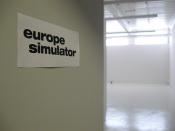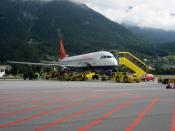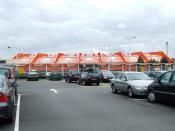IntroductionThis report has been written in order to provide an environmental and competitive analysis of the low-cost airline industry sector from the position of Easyjet. It will give a brief history into Easyjet and the low-cost airline industry. It will analyse the internal strengths and weaknesses as well as the external threats and opportunities. Competitors will be analysed through the use of porters 5 forces model. Recommendations will be made for easyJet's marketing strategies for the next three years.
Corporate HistoryEasyjet was founded in 1995 by Stelios Haji-Ioannou who based the firm around the low-cost, no-frills model of the US flight operator 'Southwest'. The concept of Easyjet is based on the fact that short flights within Europe are price elastic, meaning the lower the prices the more people will travel within Europe.
The deregulation of the European airline industry in 1992 authorised any European airline to operate, fly and land anywhere within Europe.
This allowed airlines to expand routes and operate within Europe with much higher precision.
Easyjet was initially started from its 'hanger' headquarters at Luton airport with two Boeing 737-300's offering flights from London Luton to Glasgow and Edinburgh at a price of ã29 each way.
To date easyJet has now expanded into offering 125 routes from 39 major European airports using their fleet of 122 aeroplanes. EasyJet has also expanded into having large basis at not only Luton airport but also Liverpool, Geneva, and AmsterdamBack in 1999 easyJet gained free mass exposure to an audience of around 9 million viewers through ITV's 'fly on the wall' documentary series 'Airline'.
The launch of easyjet.com in 1997 has become an integral part of the business model and has seen a huge change in the culture of booking travel tickets. Currently easyJet.com provides around 90% of bookings today and in...


